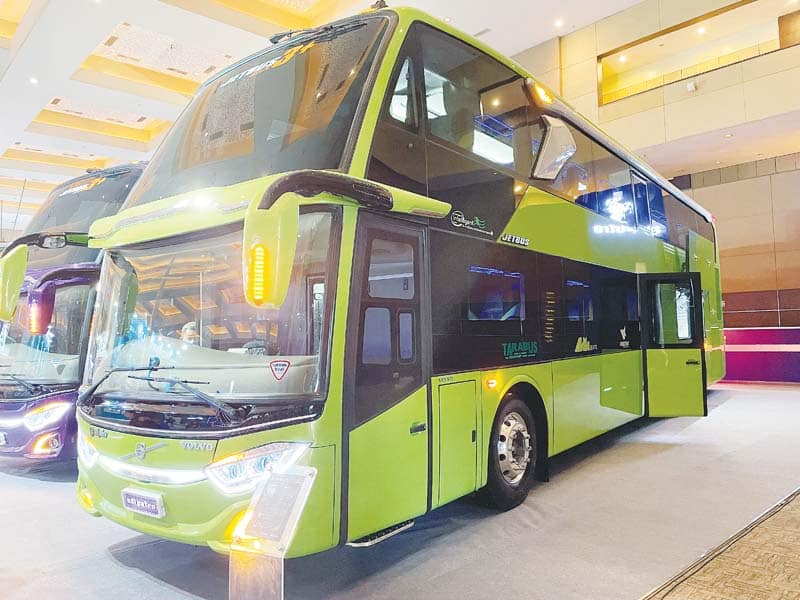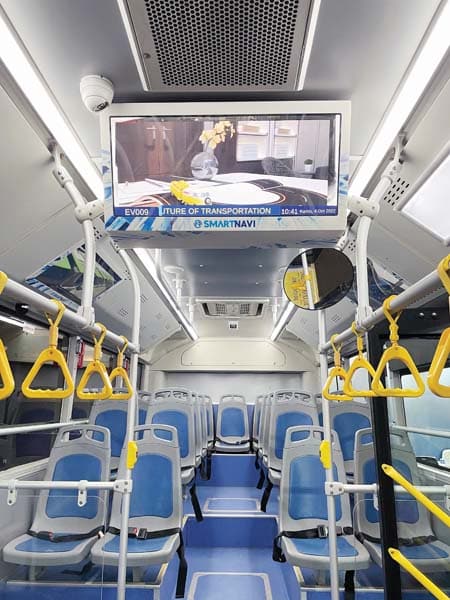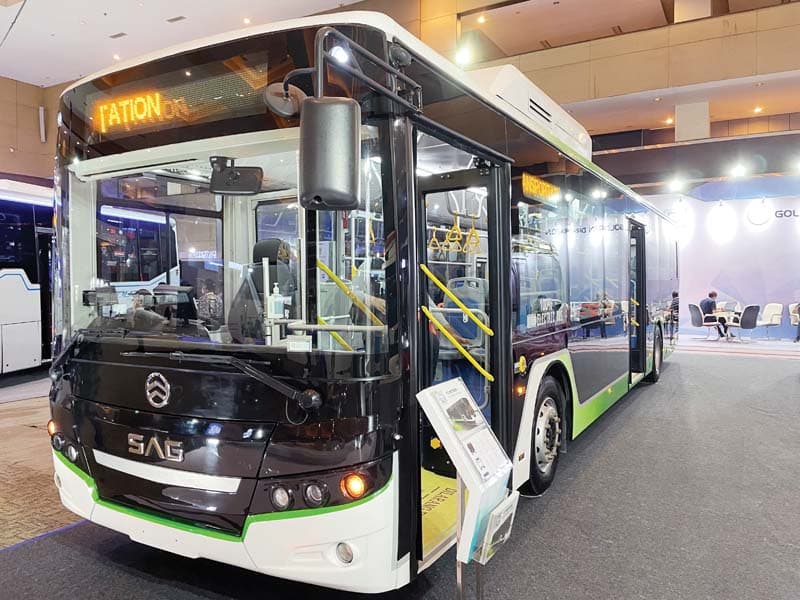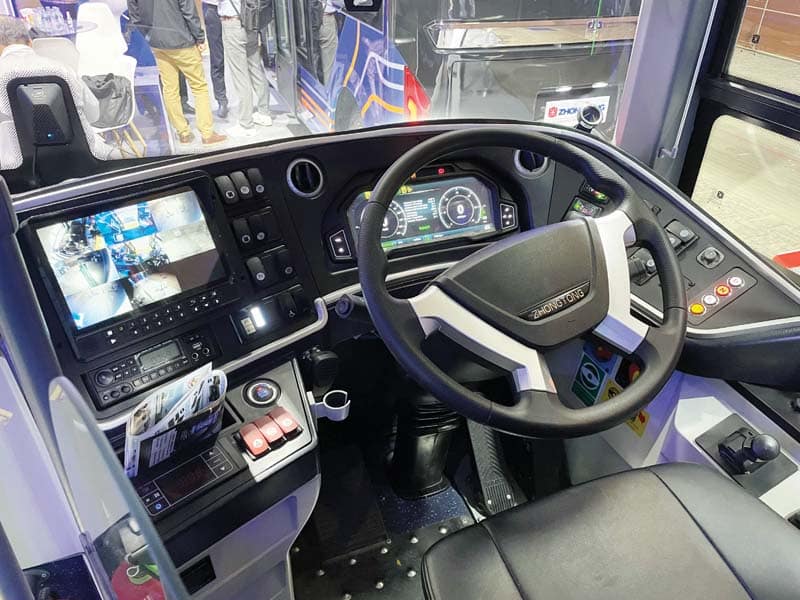Busworld SouthEast Asia 2022 marked the return of the bus and coach fair to Jakarta. Ashish Bhatia looks at the new line of buses and coaches with the potential of finding takers.
 Busworld SouthEast Asia 2022 revived the memories of an impressive debut at the Jakarta International Expo (JIEXPO) Kemayoran – Jakarta, in Indonesia, in 2019. Three years since the inaugural edition of the biennial trade fair, the world and the SouthEast Asian market have seen much water flown under the bridge. Covid-19 tattered the bus segment with sales nose-diving, and plans spoken off at the debut show sent to the back burners. This included tackling an ageing bus fleet and responding to the call for ‘Coach Tourism’ in the country; tackling an exploding two-wheeler population by incentivising public transport and helping bus operators become more rational. The focus on growth and the addition of ~200,000 buses to the market shifted to recovery like in the other parts of the world.
Busworld SouthEast Asia 2022 revived the memories of an impressive debut at the Jakarta International Expo (JIEXPO) Kemayoran – Jakarta, in Indonesia, in 2019. Three years since the inaugural edition of the biennial trade fair, the world and the SouthEast Asian market have seen much water flown under the bridge. Covid-19 tattered the bus segment with sales nose-diving, and plans spoken off at the debut show sent to the back burners. This included tackling an ageing bus fleet and responding to the call for ‘Coach Tourism’ in the country; tackling an exploding two-wheeler population by incentivising public transport and helping bus operators become more rational. The focus on growth and the addition of ~200,000 buses to the market shifted to recovery like in the other parts of the world.
 The predominantly bus bodybuilding market (~600 bodybuilders) took a severe hit despite all of its potential including the TransJakarta, the world’s largest Bus Rapid Transit (BRT) system at 251 km and the more recent Mass Rapid Transit (MRT) put in place to deals with rapid urbanisation and traffic bottlenecks. As if that wasn’t enough to deal with, the focus since has also been on promoting a new capital to succeed Jakarta with investors weighing the pros and cons. Most recently, generous incentives were doled out, including offering a 30-year tax break for companies investing in an estimated USD 32 bn project to build the new capital city Nusantara in a bid to entice private companies. A 350 per cent ‘super tax’ deduction for Research & Development (R&D) activities were also spoken of to sweeten the deal. This, say some, is far more generous compared to other Indonesian cities.
The predominantly bus bodybuilding market (~600 bodybuilders) took a severe hit despite all of its potential including the TransJakarta, the world’s largest Bus Rapid Transit (BRT) system at 251 km and the more recent Mass Rapid Transit (MRT) put in place to deals with rapid urbanisation and traffic bottlenecks. As if that wasn’t enough to deal with, the focus since has also been on promoting a new capital to succeed Jakarta with investors weighing the pros and cons. Most recently, generous incentives were doled out, including offering a 30-year tax break for companies investing in an estimated USD 32 bn project to build the new capital city Nusantara in a bid to entice private companies. A 350 per cent ‘super tax’ deduction for Research & Development (R&D) activities were also spoken of to sweeten the deal. This, say some, is far more generous compared to other Indonesian cities.
 Albeit, concerns over funding and management of the ambitious project set to see fructification by August 2024 (coinciding with the country’s National Day celebrations) have uncertainties looming large as per surveys. With the above underlying change forming the backdrop of the second edition, Busworld International deserves credit for pulling off yet another successful edition. Positioning the myriad challenges as mega opportunities, the leading B2B bus and coach exhibition company with a partner, GEM Indonesia, came back to JIEXPO for a three-day fair, held from October 05-07, 2022. It found support from key stakeholders and exhibitors like the four biggest bodybuilders in Indonesia known to account for 90 per cent of the Indonesian market. In addition, to two imported Chinese brands.
Albeit, concerns over funding and management of the ambitious project set to see fructification by August 2024 (coinciding with the country’s National Day celebrations) have uncertainties looming large as per surveys. With the above underlying change forming the backdrop of the second edition, Busworld International deserves credit for pulling off yet another successful edition. Positioning the myriad challenges as mega opportunities, the leading B2B bus and coach exhibition company with a partner, GEM Indonesia, came back to JIEXPO for a three-day fair, held from October 05-07, 2022. It found support from key stakeholders and exhibitors like the four biggest bodybuilders in Indonesia known to account for 90 per cent of the Indonesian market. In addition, to two imported Chinese brands.


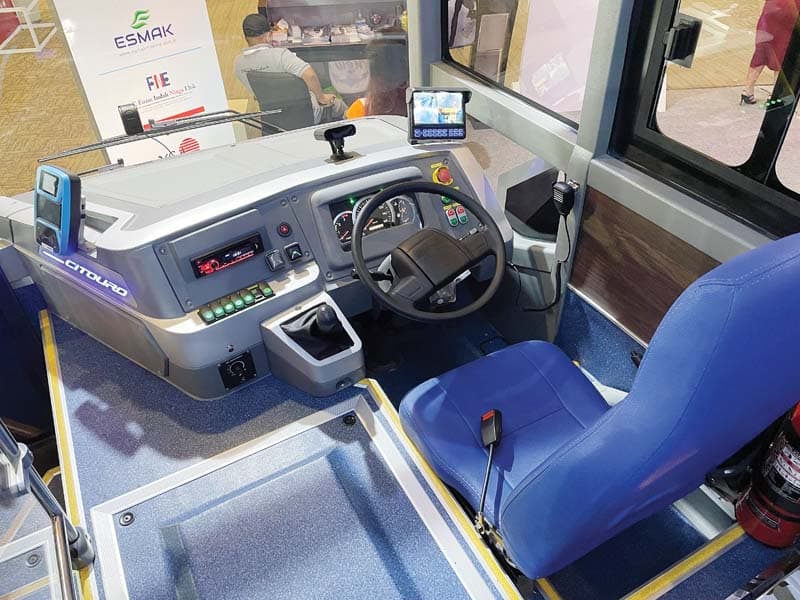
 The exhibition didn’t disappoint with a mix of electric buses and luxury coaches that had conferences running in parallel to deliberate on key industry-relevant topics. Busworld, no wonder was able to pique the interest of over 4,000 visitors from over 42 countries. It proved a testimony to the Indonesian Government’s plans to encourage an electric bus fleet. Averred Vincent Dewaele, General Manager of Busworld International, speaking on the potential of the Indonesia edition of Busworld, “After a second successful edition, we believe that Busworld Southeast Asia has a significant potential to grow. We will use all of our channels to inform the international Busworld network of the qualitative Indonesian products and we will bring more international exhibitors and visitors in 2024.”
The exhibition didn’t disappoint with a mix of electric buses and luxury coaches that had conferences running in parallel to deliberate on key industry-relevant topics. Busworld, no wonder was able to pique the interest of over 4,000 visitors from over 42 countries. It proved a testimony to the Indonesian Government’s plans to encourage an electric bus fleet. Averred Vincent Dewaele, General Manager of Busworld International, speaking on the potential of the Indonesia edition of Busworld, “After a second successful edition, we believe that Busworld Southeast Asia has a significant potential to grow. We will use all of our channels to inform the international Busworld network of the qualitative Indonesian products and we will bring more international exhibitors and visitors in 2024.”
From the buses on show, an estimated six of eight buses were Battery Electric Vehicles (BEVs). The coaches impressed yet again with a high degree of customisation that is inherent to the bodybuilding market known to rely on Original Equipment Manufacturers (OEMs) for their supplied chassis to build upon. Contrary to Asian markets like India rolling out light-weighted BEVs with thinner seats, in Indonesia, passenger comfort was a clear priority. The confirmation of coaches across booths being sold is testimony to the display matching commercialised, products, fit to ply on-road as standard offerings to the market.
This year, New Armada launched the 12m Skylander R22 coach built on a Hino RM 280 chassis. Launched earlier in 2022, the chassis is known to use the J08E-WD equipped with Exhaust Gas Recirculation (EGR), Diesel Oxidation Catalyst (DOC), and an ECU control system in a Euro 4 guise. The injector is claimed to offer high resistance owing to a Diamond Like Coating (DLC) coat material. The coach is claimed to develop 276 hp (280 PS) and 823 Nm of torque from the engine and stands out with its wide model pneumatic suspension compared to narrow models used in other models.
The coach offers standard reclining seating in a 2×1 layout to accommodate nine passengers followed by a three-seater cushion and two single-seaters that could accommodate another five passengers. The generous use of floor space has the company offering custom layouts and seats with leg rest as optional. The coach reinstates New Armada as a go-to company for contemporary bus and coach designs and bodies fitted, confirming Original Equipment Manufacturer (OEM) standards. It used the novelty factor of its rear glass-turned display coming to the aid of oncoming traffic such that the driver can look beyond the coach to gauge the traffic ahead to win operators. This removes the guesswork and blind spots from the picture. With Indonesia known to be a predominantly two-wheeler market like India, the optional Mirrorcam and Videotron could lead other OEs and bodybuilders to follow suit in a bid to enhance active safety measures as the benchmark.
Besides the Skylander R22, the company also showcased the 7.8m Citouro medium city tour bus built on a Mitsubishi Fuso chassis. According to Gov. Ministry of transportation data, the company is looking to tap into the projected demand of 40,000 e-buses by 2030 for Indonesian cities to meet the clean energy target. Of these, an estimated 10,000 buses would be needed by Jakarta alone in an ideal scenario with a minimal requirement of 1,000 buses at the least, shared Sommy Lumadjeng, Sales and Marketing Director, New Armada in a presentation on South East Asia and Indonesia bus market. On the non-city bus, he said, an estimated 5.349 companies were adopting the segment that is further bifurcated into the intercity bus and the coach segment.
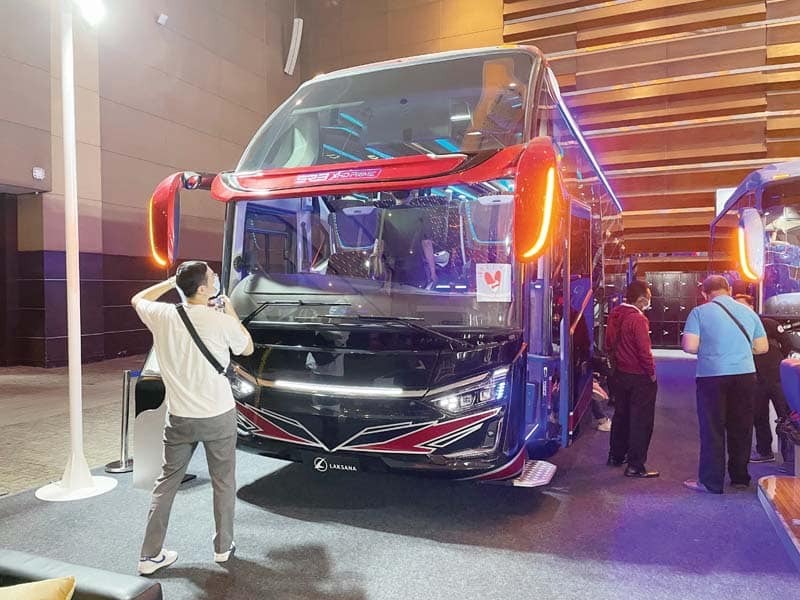

Bodybuilder Laksana, coming on the back of its export quality, SR2 XHD Prime coach showcased last year on a Scania chassis, winning the company orders from Bangladesh, premiered the 13m SR3 XHD Prime Ultimate this year. The new coach is built on the Hino chassis and made available in a 2×2 seating layout. The extra high deck meant inherited from the predecessor is aimed at customer comfort and to heighten the sightseeing experience further. The generous luggage ferrying capability of the coach is also hailed as its USP. Laksana complemented it by showcasing the electric City line 3 built on a BYD chassis and capable of holding up to 80 passengers. Like the case with most models, the bus exterior is made of aluminium and galvanised steel. The front doors are of pneumatic assist type with inward gliding with two middle, plug sliding doors.
Laksana also showcased a medium coach Tourista Ultimate Edition with a single glass body type. Capable of seating up to 32 passengers, the bus features a completely new front and rear design that makes it look attractive at first glance. The bodybuilder also gave a sneak peek into its first electric bus in Jakarta built with exceptional lightweight. Claimed to be 300 kg lighter than aluminium, the bus is claimed to be a 1.5-tonne lighter with the use of composite materials and an optimised structure. Apart from design innovation, the company drew attention to innovation on fronts like safety covering rollover test, seat and anchorage strength test, stability test and Front Underrun Protection (FUP).

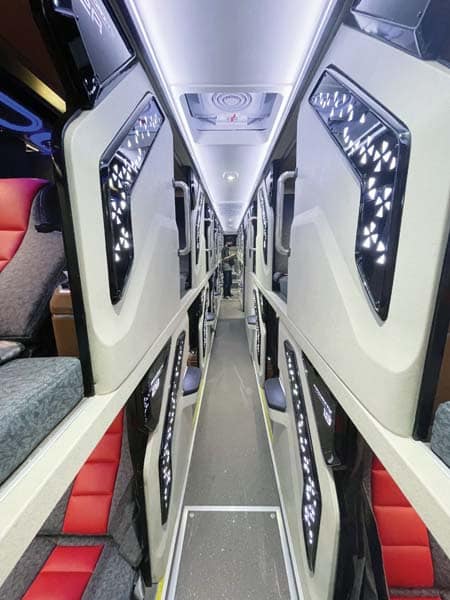
Tentrem wooed the visitors with its 12m electric bus Velocity W5, which claimed to have been indigenously manufactured with 100 per cent localisation of parts including the chassis. Defying the odds of bus bodybuilders limiting business to bus bodies built on foreign chassis in Indonesia, it has the bodybuilder turning OEM. The bus, built on a stainless steel frame uses an aluminium body panel. The company also drove in a 12.8m sleeper coach Avante H9 Priority on a Mercedes Benz 0500RS 1836 chassis. Built using galvanised steel it is offered with an aluminium panel as an option. Flooring on the bus is supplied by Tarabus Toilet. Seats on the bus are supplied by Rimba Kencana. The HVAC system on offer is supplied by Denso LD9.
Debutant Adi Putro presented their nine-metre Jetbus Transit as the first monocoque low-floor, medium bus concept in Indonesia. Built using galvanised steel, the bus can ferry 22 passengers. Capable of producing 150 buses and 80 minibuses every month, the company is banking on the opportunities as a result of the USD 224 mn fund approved by the World Bank’s Board of Executive Directors for the Indonesia Mass Transit Project (MASTRAN) aimed at increasing urban mobility and mass transit accessibility in main cities. It is also aimed at increasing institutional capacity. The Jetbus Transit is being pitched as a viable option for BRT systems across metropolitan areas like Medan, North Sumatra, and Bandung, West Java. Adi Putro is also working on the electric variant of the Jetbus Transit expected to be showcased in the 2024 edition. The company also showcased the 13.5m coach Jetbus SDD, built on the Volvo B11R chassis. The bus boasts four sleeper seats and 28 regular seats and can be had with a kitchen set and smoking area.
Golden Dragon presented the SAG 12m city bus and the six-metre All Star bus. The SAG 12m city bus version is an electric low-entrance A/T classification. It can accommodate 59 passengers. Drawing power from the Prestolite DANA TM4 motor charged using a 326 kWh CATL, Lithium Ferro Phosphate battery pack, the bus is claimed to offer 250 km mileage on a single charge. It can be charged from 20 per cent to 100 per cent in one hour using a 200 kWh charger as per company claims. In comparison, the All Star is a compact, six-metre electric bus. Of the XML6606JEV Bus CBU A/T type, the bus can ferry 24 passengers. It draws its power from a permanent magnet synchronous motor like the SAG, charged by a 90.24 kWh CATL, Lithium Ferro Phosphate battery pack. It can be charged from 20 per cent to 100 per cent in 30 minutes using a 150 kWh charger. The use of leaf springs (5/5) to make up the suspension was a surprise.
Zhongtong Buses, known to be distributed in Indonesia by PT Mobilindo, showcased the six-metre and 12m electric buses. The six-metre LCK6606EVGA36 model can seat up to 25 passengers. The V60, the e-coated body type of the bus and the use of high-grade paint make it stand out. The bus is powered by a lithium-iron-phosphate battery pack coupled to a direct drive. In comparison, the 12m LCK6126EVGRA1, can seat 33+1. It makes use of the New N series, low-entrance, e-coated body type. It draws power from a Lithium Iron Phosphate battery pack. Notably, the suspension of the bus is made of two airbags at the front, and four in the middle in combination with a pneumatic setup used to lift a sagging vehicle, especially when carrying uneven loads.
In all six seminars spanning market analysis, post-covid health protocols and zero-emission buses and their operations had visitors keenly participating. Attention was brought to several models of Public-Private Partnerships (PPP) seen as the foundation of such an energy transition. A highlight was the Indian delegation from the Association of State Road Transport Undertakings (ASRTU) visiting Jakarta’s multi-modal transport. The visit also covered a look at the EV ecosystem where the delegation made a pit stop at the electric charging station Mayasari.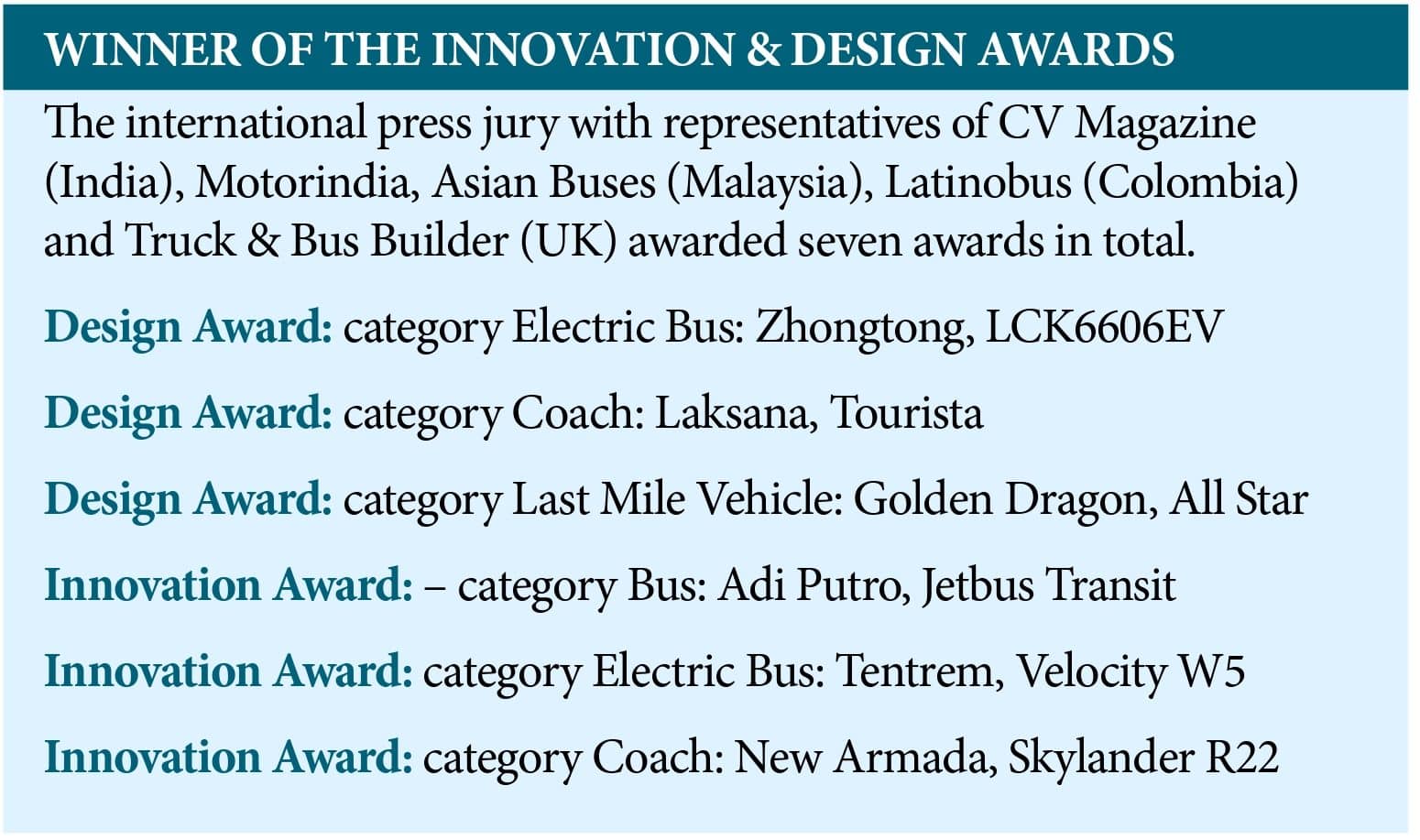
Jan Deman, Managing Director of Busworld Foundation expressed satisfaction at the outcome of the conference and thanked partners ITDP, Frost and Sullivan, and the Indonesian Ministries of Transport and Finance, MTI, Instran, Askarindo and Ipomi. In 2024, Busworld aims to further the balanced dialogue between policymakers and the industry in an even more holistic approach. Like it lived up to the promise of bringing the focus on BEVs in the inaugural edition, one can be certain of the next edition of Busworld SouthEast Asia 2024 living up to its expectations and going beyond!





